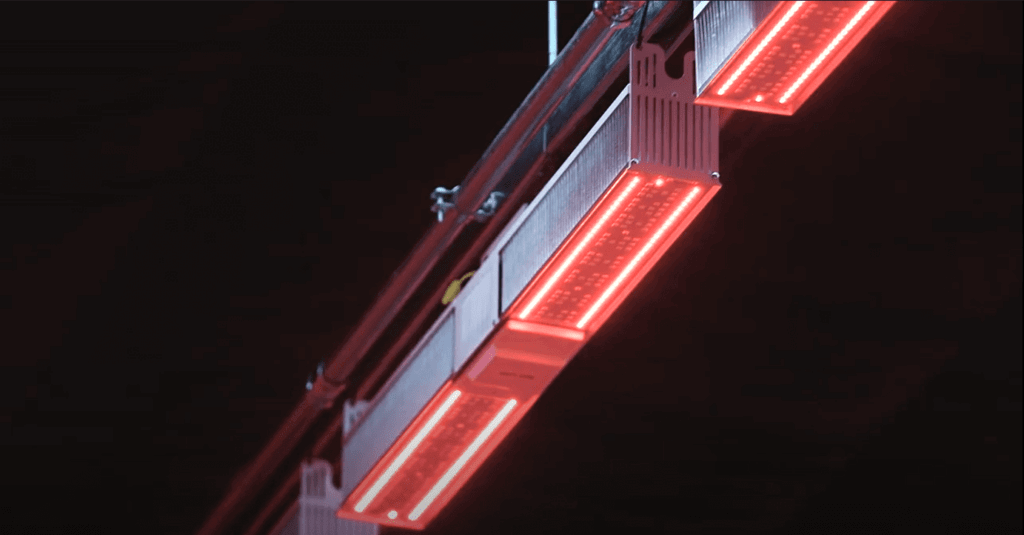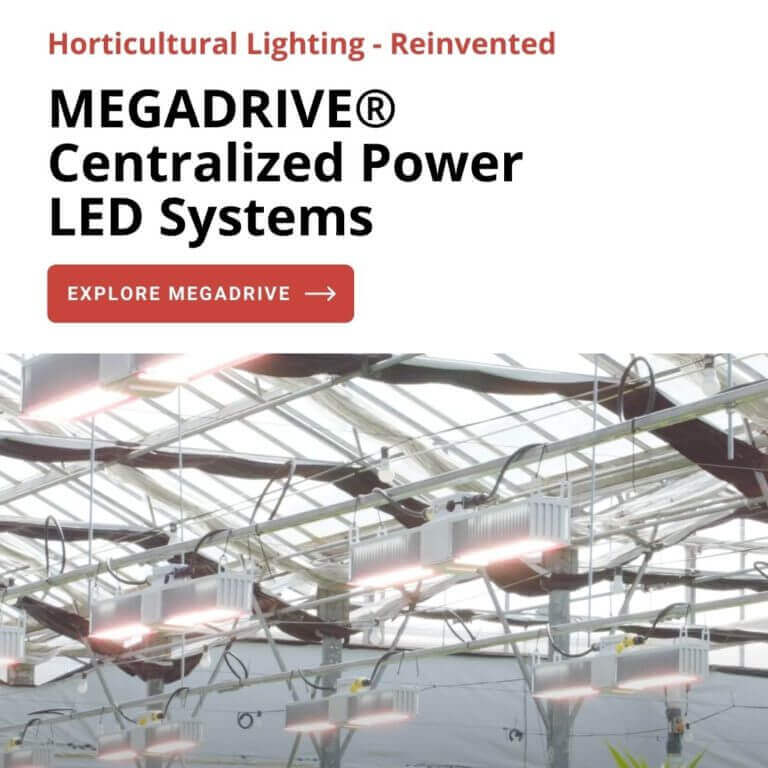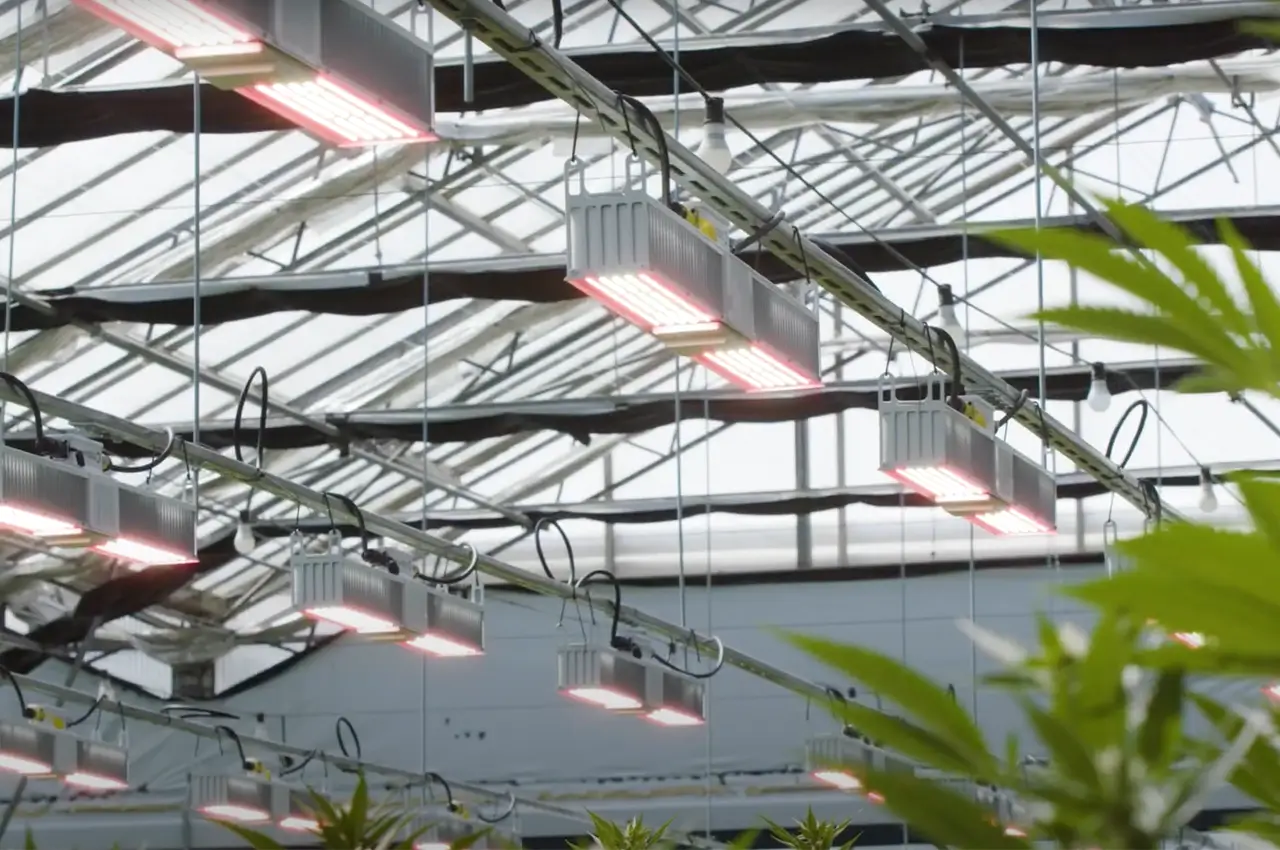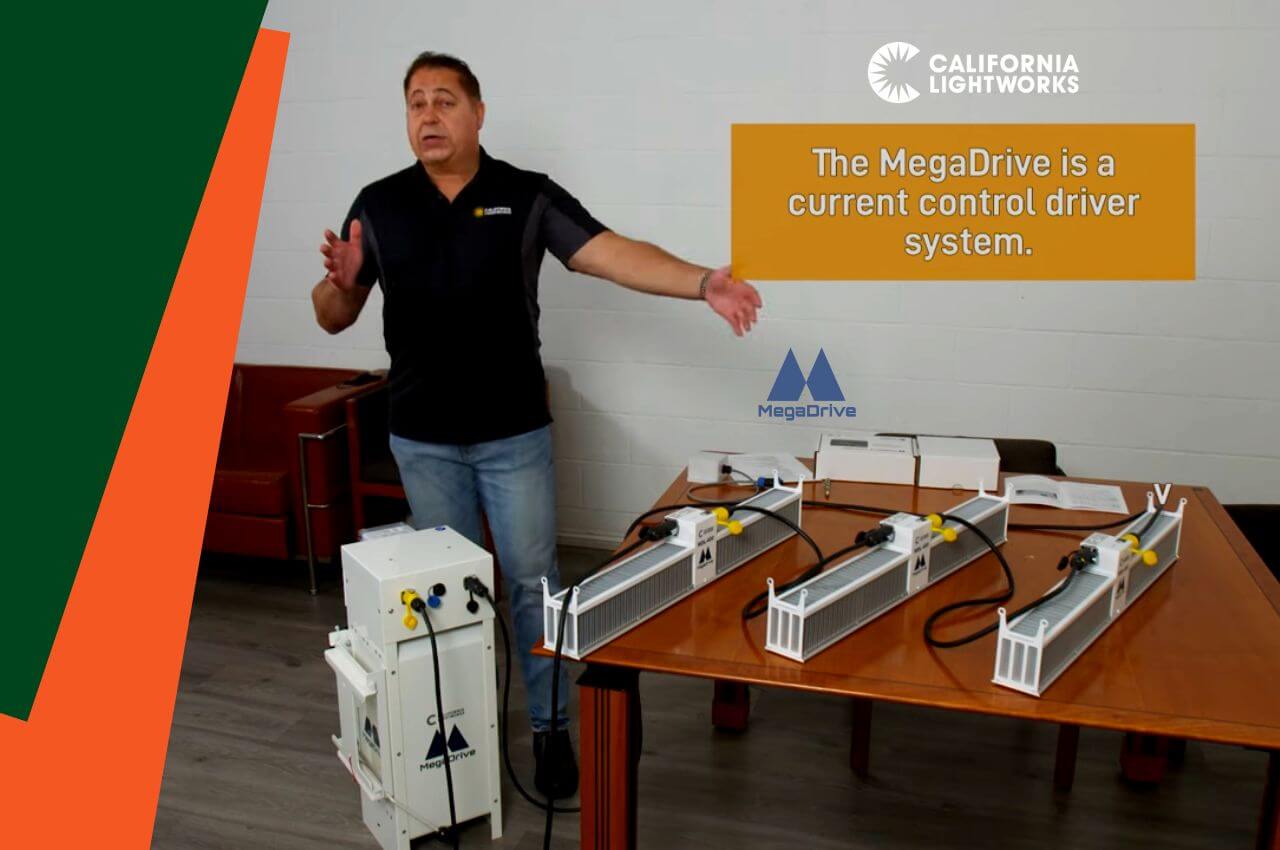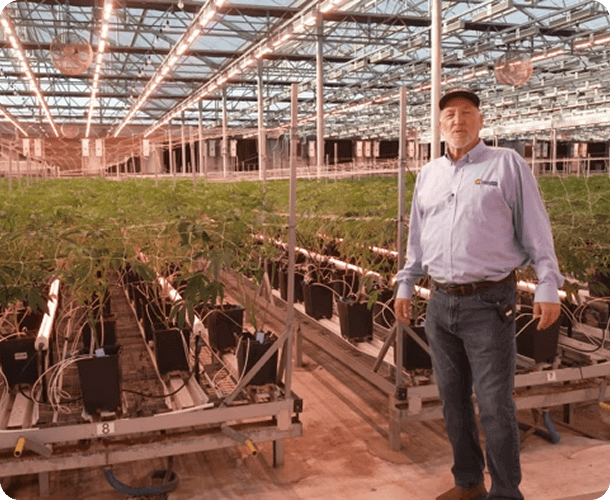The goal for any grow light is to provide adequate light intensity for your plants at each grow stage. When it comes to LED lighting, what can be tricky is the issue of light uniformity.
Photosynthetic photon flux density (PPFD) measures the amount of usable light plants receive under a lamp. Grow light manufacturers list the PPFD specifications of lights with recommendations regarding hanging height. The farther a plant is from a fixture, the lower the PPFD. Plants on the edge of the room typically get lower light levels than those in the center, which can cause your plants to grow at different rates.
While LED lighting technology is evolving fast, there is still no type of light specifically designed to address uniformity issues and ensure all plants get an equal amount of light. As a result, you often need to get creative throughout the grow cycle. This means altering your set-up and fixtures as needed so your plants grow at roughly the same rate.
There is also the issue of your setup. Greenhouses and grow rooms have different needs when it comes to lighting.
Below, we will offer an introductory guide to the types of LED lights most beneficial to both your grow setup and grow stages.
Lights For Grow Stages
Vegetative Lights
During the vegetative stage, altering the light spectrum is usually unnecessary, but you will need to slowly increase light intensity. This helps your plants grow large roots, stems, and leaves, ensuring they’ll be in excellent shape for the flowering stage.
With vegetative lights, look for:
- Dimming capabilities
- A higher blue to red ratio (which helps with light uniformity)
If you are using lights in a multi-tier racking system, this can adversely affect light uniformity and cause plants in the center to get too much heat. This problem could be potentially addressed with a fixture with greater emitter density around the edges, but no such fixture currently exists.
This is why dimming capabilities are important. Turning your light to a lower intensity can help prevent burning early on, as seedlings are far more sensitive to light than adult plants. If you do not have dimming capabilities, moving your lights farther from the plants can also help mitigate overheating issues.
Flowering Stages
For the flowering stage, you want a high-performance light with full dimming capabilities and independent channel control to help transition your plants out of the vegetative stage and nurture them throughout the flowering stage.
When plants first move into the flowering stage, the red and far-red channels are typically turned off. After two to three weeks, you can slowly introduce these color spectrums. Independent far- red controls are particularly important for growers hoping to experiment by tweaking their light spectrum throughout the grow cycle.
At California Lightworks, we sell lights for both personal and commercial use that come with full- spectrum control and dimming.
One special consideration to make when investing in flowering lights is size. Flowering lights are often heavier and larger than other fixtures, so hanging them up is usually a two person job. If you are hiring outside labor to hang your lights, take the extra cost into consideration.
Other Types Of Lights
Side Lights
It is impossible for PPFD levels on the edge of the room to match those at the center. Even common tricks like doubling the number of edge fixtures fails to fully address the problem. The plants in the center always have a slight advantage.
Side lights can help mitigate this problem, which are light panels installed directly into a room’s surrounding walls. Side light installation poses some problems for those working inside a grow room. First, side lights should never protrude too far out from the wall as they can be easily bumped and damaged. Second, side lighting can be harmful to workers’ eyes. Make sure you invest in side lights that can be dimmed or turned off when someone enters the room.
Side lighting is somewhat new in LED technology, so it may be difficult to find safe options. However, it is something to keep an eye on in the coming years.
Intra-Canopy Lights
Intra-canopy lights are designed to place LED emitters inside the canopy itself. However, there are not many intra-canopy lights on the market as there is not currently a big demand. Typically, intra-canopy lights are used for greenhouses that grow vine crops such as tomatoes.
Greenhouse Lights
Greenhouses are larger facilities where many people come and go each day, making lights more susceptible to damage. Greenhouses are also affected more by external weather conditions, meaning factors like heat. humidity, UV light from the sun, rain and snow can potentially affect lights. For this reason, durability is the number one factor to consider when choosing greenhouse lights.
Grow lights have something called an “IP rating,” which stands for “ingress protection.” It measures the degree of protection provided against both liquids and solids that could interfere with a light’s functioning. The higher the IP rating, the more durable the fixture.
For greenhouses specifically, shoot for an IP rating of at least IP65. A higher rating is always better if it is within your budget. The highest possible IP rating is IP68. These lights would be almost completely protected against both foreign objects and water damage.
Types of LED Lights: The Bottom Line
When you are just starting out, learning about the different types of LED lights can be overwhelming. This is just an introductory guide, so we encourage you to do your own research to ensure you are getting the proper fixtures for your needs.
Putting in the time and research necessary to choose quality fixtures is well worth the effort. In the end, you will end up with a healthier yield and a better overall growing experience.
At California Lightworks, we strive to help growers at all levels thrive. If you have any questions regarding lighting, please reach out here and someone will be in touch.
